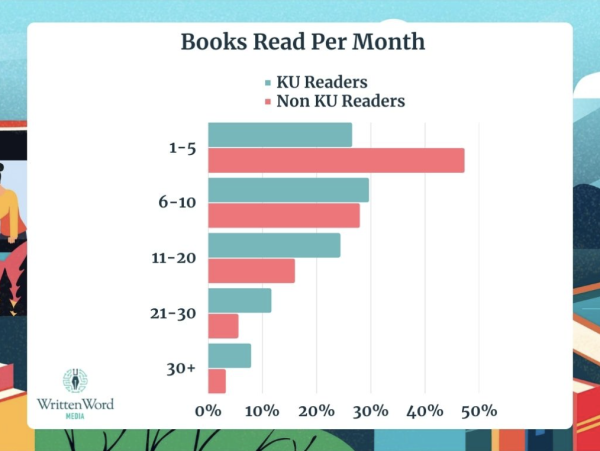In 2023, the average American started 12.6 books per year but only finished just over five books per year. This is a sharp decline from 18.5 books started in 1999. This begs the question, are books dying?
The Pandemic
With the restrictions placed on mobility and work in 2020, people all over the world were forced to find alternate means of entertainment. According to the LA Times, global video streaming services surpassed 1 billion subscribers in 2020.
The streaming industry is not the only form of entertainment that spiked in sales. The COVID-19 pandemic had a huge impact on the publishing industry as well. Bookstore locations closed, but there was a 22% increase in e-book sales. Even after many restrictions were lifted in 2021, Forbes reported that book sales were still up 8% from 2019.
The rumor that books are dying is directly disproven by sales numbers during the COVID-19 pandemic. If anything, book sales are thriving in comparison to past years.
Books Read vs. Books Bought
Comparing the two statistics given above, why are people buying more books but not reading them?
Lit Hub’s Emily Temple states, “This decline … seems to be fueled not by fewer Americans reading, but by the fact that the Americans who do habitually read are getting through fewer books.”
She goes on to explain that 17% of American adults admit to not reading any books in the year 2021. This number matches with survey numbers taken in 2002-2006.
Temple adds that the change in reading trends lies in the fact that “only 27% of Americans reported reading more than 10 books in 2021, down from 35% in 2016.”
Readers are buying books but not reading them as quickly as in past years, leading to an uptick in sales and a decline in completed books. This gives fuel to the argument that books are not in fact dying, people just have slower reading rates.
An Outlier: Amazon’s Kindle Unlimited
Amazon’s Kindle Unlimited (KU) has revolutionized how readers consume books and how they buy them. With a low cost of $11.99 per month, readers can access over 4 million digital titles. KU offers e-books, audiobooks, magazines and even comic books and manga. The program works like a library service and Netflix combined for readers.
The only conditions are having a device (phone, tablet, computer or e-reader) with internet/data, the Kindle app and a 20-book-at-a-time download limit.
According to Amazon, “Kindle Unlimited offers a seamless digital reading experience with unlimited access to popular series, best sellers, classics, and more.”
For those who prefer e-books, this subscription is revolutionary. So, let’s get into the numbers.
While official numbers of KU subscribers are not announced, Clayton Noblit of Written Word Media states, “It’s safe to assume that there are at least 4 million readers in Amazon’s Kindle Unlimited.”
The stark difference in the reading rates of KU subscribers and non-KU readers is astonishing. Over 73% of KU members read over five books per month. Meanwhile, only 52% of non-KU readers report reading over five books per month.
Noblit goes on to say, “Over 19% of our KU subscriber sample said they read more than 20 books per month!” For this reason, they are statistically outliers in the reading community.

KU subscribers also contribute to “normal” book sales. A startling 63% of KU subscribers reported that they often purchase books not enrolled in their KU subscription. Only 6% of KU subscribers stated that they “never” buy books outside of their subscription.
Noblit states, “KU readers read more books and review books at a higher rate. It’s safe to assume they are more active generally than their non-KU counterparts.”
Closing the Book
The rumor that “books are dying” is completely not rooted in fact. While traditional reading rates have declined, sales of books have increased since before the pandemic.
The numbers reflecting KU reads and connected purchases are enough to prove the inaccuracy of the rumor that the books are becoming obsolete.
A common misconception about the publishing industry is that it only includes print books. E-books, comics, audiobooks and even magazines are all encapsulated in the publishing industry. These are constantly being bought and read by consumers.
With programs like KU constantly growing, the book industry is far from death. If anything, these programs are spurring the industry forward.




